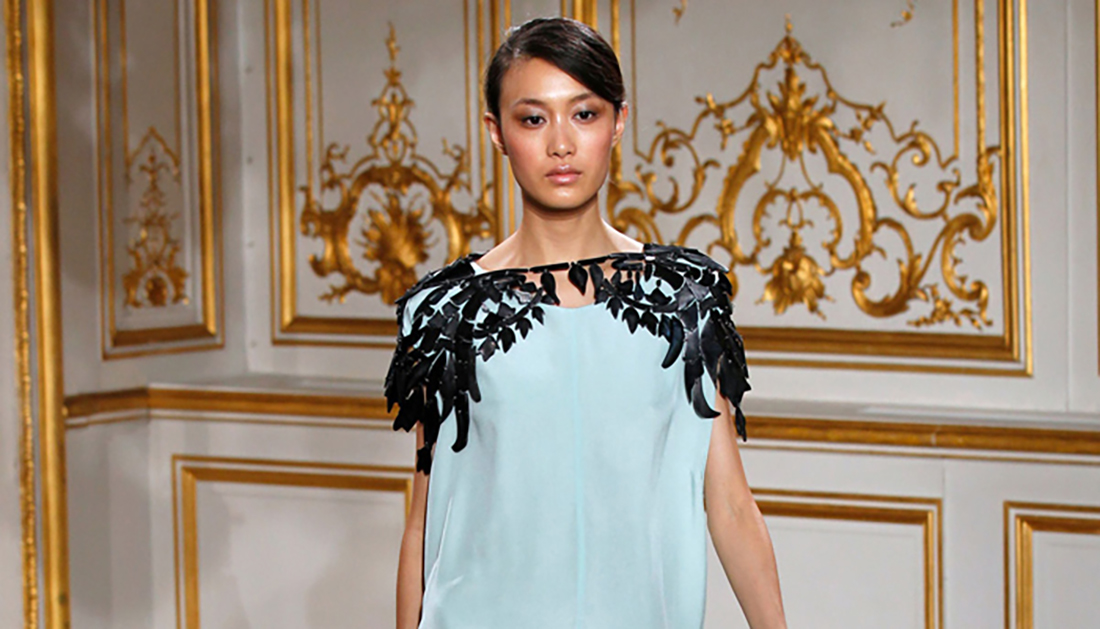Where your fashion comes from, who made it, and how it was made, have all become important considerations.
Luxury has returned and consumers are looking at how brands are highlighting an artisanal craft into their unique garments. However, consumers have returned to luxury in a new way, with sustainability at its core. Post the economic crisis we’re not seeing a rebound to the ‘old’ luxury of the early 2000s, with its unashamed opulence at any cost, but rather a move by consumers to find value in new ways – one’s that are equally as rare yet with a depth of understanding as to how, why and where the product was made. The differentiation of products are becoming increasingly important in the fashion market and having a story to tell or an issue to hang your brand around will become a necessary marketing strategy for brands to become more successful.
In a sea of fashion sameness and clothing that is blandly copied by the million, simply for its trend appeal by profit driven manufacturers, illustrating how you are different from the rest is the best survival strategy. Luxury, in particular, is realizing the appeal of that rarest of commodities in today’s frantic pace of mass production – the hand crafted. This takes time, imbues a personality, and transfers some of the aura of the artisan into your garment or accessory.
Luxury had its origins in craftsmanship and artisanship. Not to be confused with arts and craft, luxury has always been about having a master craftsman making your product. Where machines were once developed to replicate this craftsmanship on a mass scale, today we see the return of a talented pair of hands. This has manifested into something which is hand cut, an edge painted on a bag or hand sewn shoes, but done at the highest level, by the most expert craftsmen.
Companies such as Gucci and Ferragamo realized the value of this and began highlight these aspects in their fashion ranges. Customers too, increasingly want to know the story behind a brand and are seeking a deeper meaning behind what they choose to adorn their bodies with. Transparency is a big trend: How does the supply chain work? Where did it come from and who made it. Does this mean that fashion is moving towards an awareness of broader social issues? Not necessarily. Fashion is still about making you feel pretty if you’re a woman and cool if you’re a guy and the mystery and ideas that many brands have created around their image still holds a major appeal over most people.
When you buy a fashion item you’re buying into a lifestyle, something that has been cultivated and packaged especially for you and put on a shelf for instant gratification. Whereas people wanted an experience in the past, they are now asking about the history and story of the brand. What a fashion house stands for has become as important as the lifestyle images they develop. Maiyet, a label out of New York, believes that fashion can have a conscience.
Enlisting artisans from India, Indonesia,Kenya, Peru and Mongolia to produce high-end, quality clothing, accessories and jewelry, Maiyet has created a luxury brand that creates unique fashion items that are often inspired by the work of artisans in emerging economies. The company was started by ex South African Paul Van Zyl, known for his work on human rights, Kristy Caylor, who led Gap’s socially conscious (RED) division and social entrepreneur Daniel Lubetzky.
Rather than delivering the obviously hand-worked looking garment from the developing world, the team have shown that the roots of luxury can be found in unusual and worthy places. A debut at Paris Fashion Week in 2011 put this unique and sophisticated range firmly on the fashion map and created a working template for sustainable fashion. With the fashion industry in the United States, generating $250 billion worth of yearly spend on clothing and accessories, the influence from a global trading perspective alone, is also worth considering. Fashion does not simply shape looks and trends but economies and livelihoods too.
The Fairtrade movement that was started in the 1940s and 1950s (best popularized through more recent initiatives such as Starbucks coffee) now encompasses over 3,000 products. Originally, only signaling that a donation had been made to a developing country, the organization now influences working conditions and local sustainability as well. Another trade initiative, Product (RED) started by U2 front man Bono and Bobby Shriver has created large-scale support for AIDS, TB and Malaria through the participation of major brands, including fashion, in developing a (product) RED line of merchandise that creates larger social benefits. Gap, Emporio Armani and Nike are some of the fashion brands that have come onboard.
More established companies are starting to take note too. François-Henri Pinault of PPR, the French multinational holding company with a worldwide brand portfolio of luxury, sport and retail brands, has even acknowledged how the increased customer focus on sustainability and social impact has led companies to take these issues seriously and to react accordingly. However, product, brand and an elevated experience are still a priority for most labels. So who initiates the trends in the fast-paced, competitive world of fashion, the consumer or the fashion house?
“From a seasonal perspective it’s definitely the designer who comes up with an idea that the editorial community latches onto and interprets,” says Caylor. “The consumer only sees this in stores six months later so it looks as if designers are far ahead of the game, but they have this entire community around them that’s helping to decide what the next big idea will be. The consumer lags behind in this respect but they are definitely starting to dictate how brands communicate.
Think social media here, which is completely new within the luxury market. Having a Twitter and Facebook presence has become a challenge that has come entirely from consumer demand. This transparency and open communication has meant that fashion has joined other non- fashion brands on a similar marketing platform,” she says Of course, without being told about the hidden social stories of a garment or accessory you wouldn’t know about it.
Online has become a huge factor in getting these stories out and also offers the best way to illustrate how things are made. Social media fits perfectly into the story re-telling among that all-important peer group, and online video now allows a fashion range to tell its story from craftsman to catwalk. “Many fashion brands will continue to hide production techniques and their source of materials and labor, either for pricing or trademark reasons, but a growing movement in the opposite direction holds the potential for capturing a large part of the fashion market,” says Caylor.
Large, established brands have begun dabbling in this approach, putting out one or two products in the market to gauge consumer reaction, but this is simply icing on the cake, not a part of how they run their business. Being as big as Gucci certainly poses challenges in how you redesign your supply chain and still protect your business, so huge opportunities exist for smaller, new fashion brands to develop these sustainable, story-rich brands without this risk.
“Turning heads with how you approach your product will become a key part of fashion,” explains Caylor. Picking up on a vibe in the world from the increasing exposure to styles in many countries is feeding both the trends and how companies source their raw material. This is a key ingredient in keeping fashion fresh and original.
It’s easy to keep looking to competitors for leads, but any fashion brand hoping to create a distinctive style knows that a strict adherence to originality will deliver results. “Smaller fashion companies who invest time in working with their suppliers and craftsmen will continue to innovate and create desirable, original fashion.
And not copying other brands has the added benefit of giving consumers that coveted prize, arriving at an event in something no-one else is wearing,” says Caylor.




































